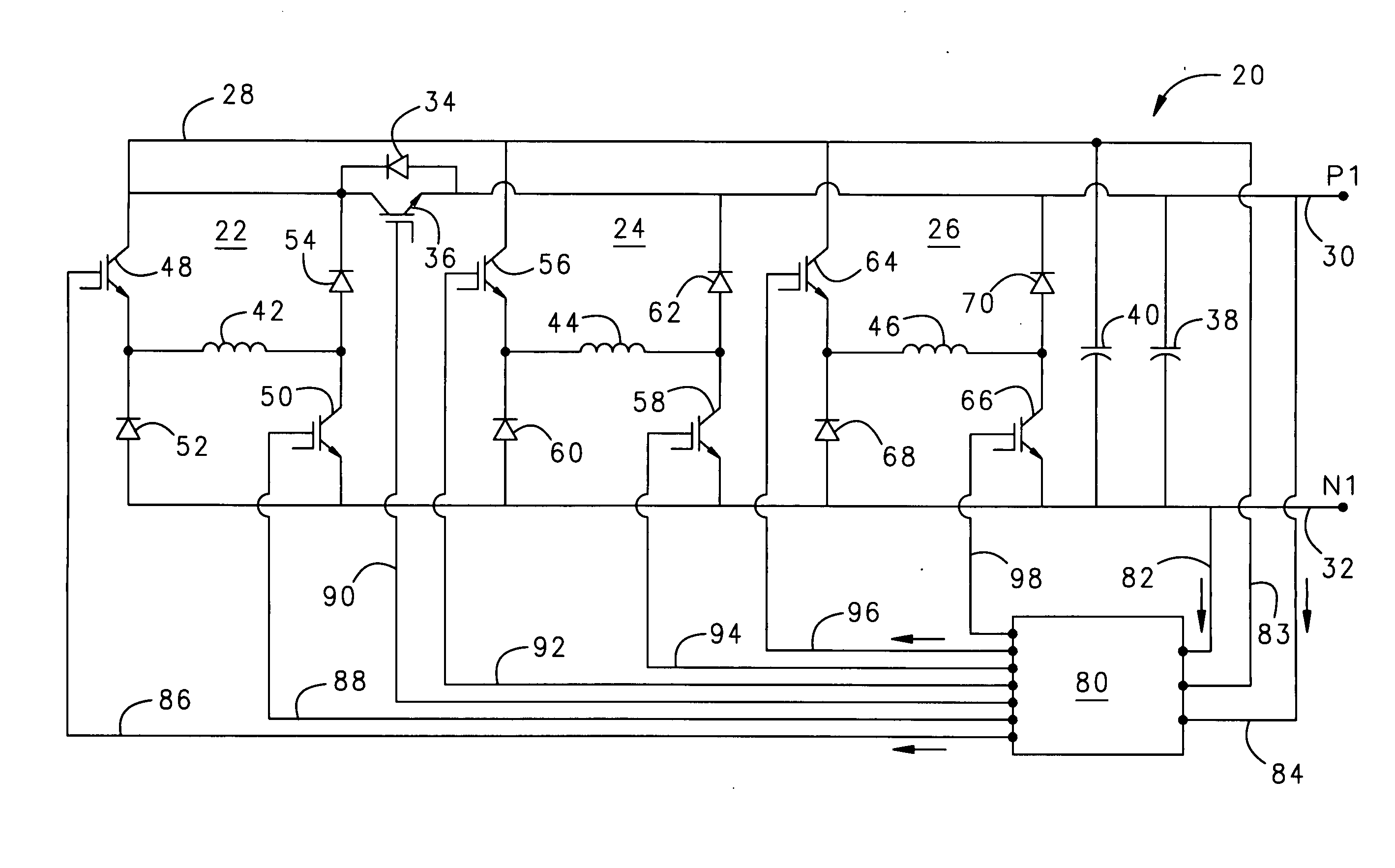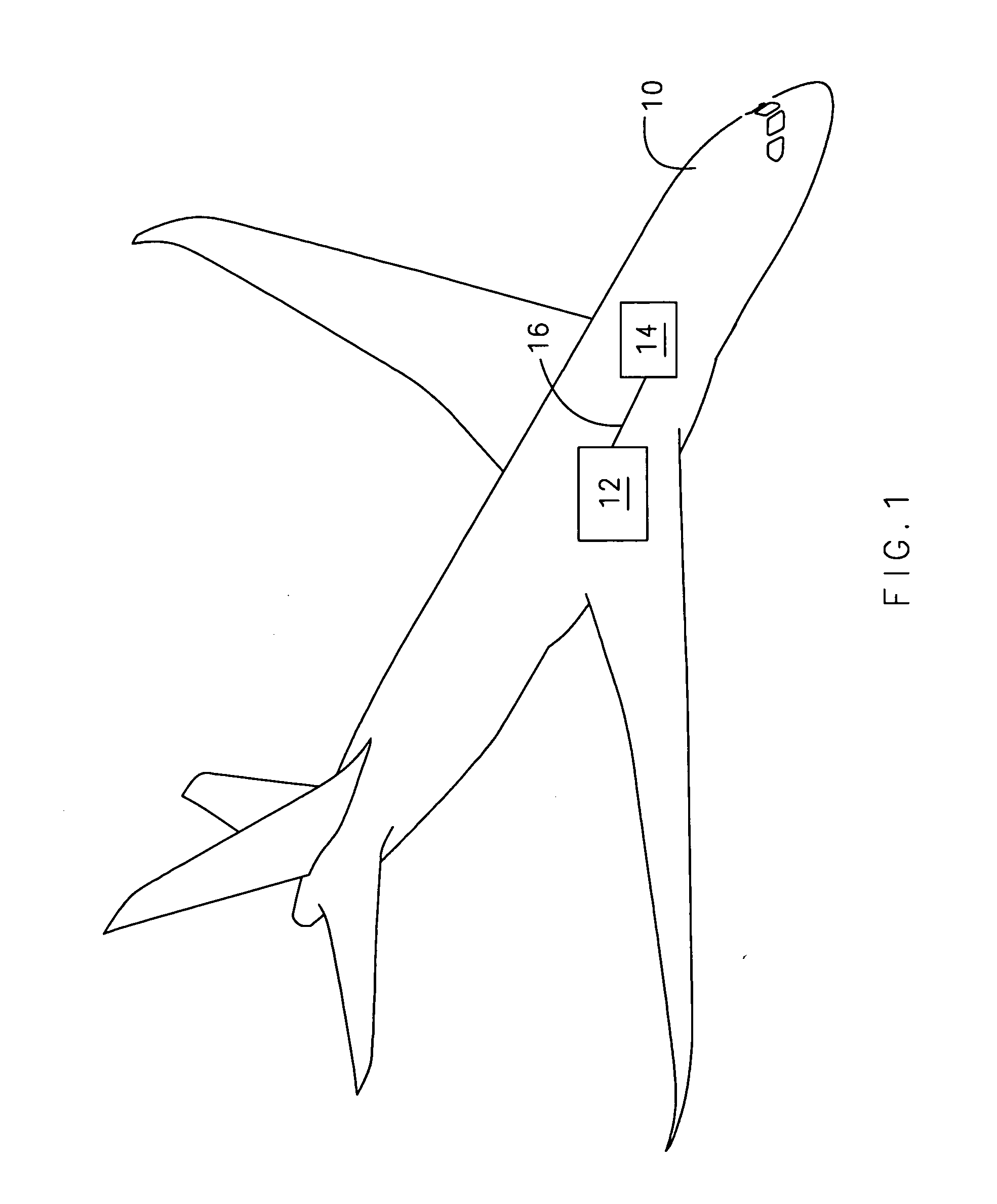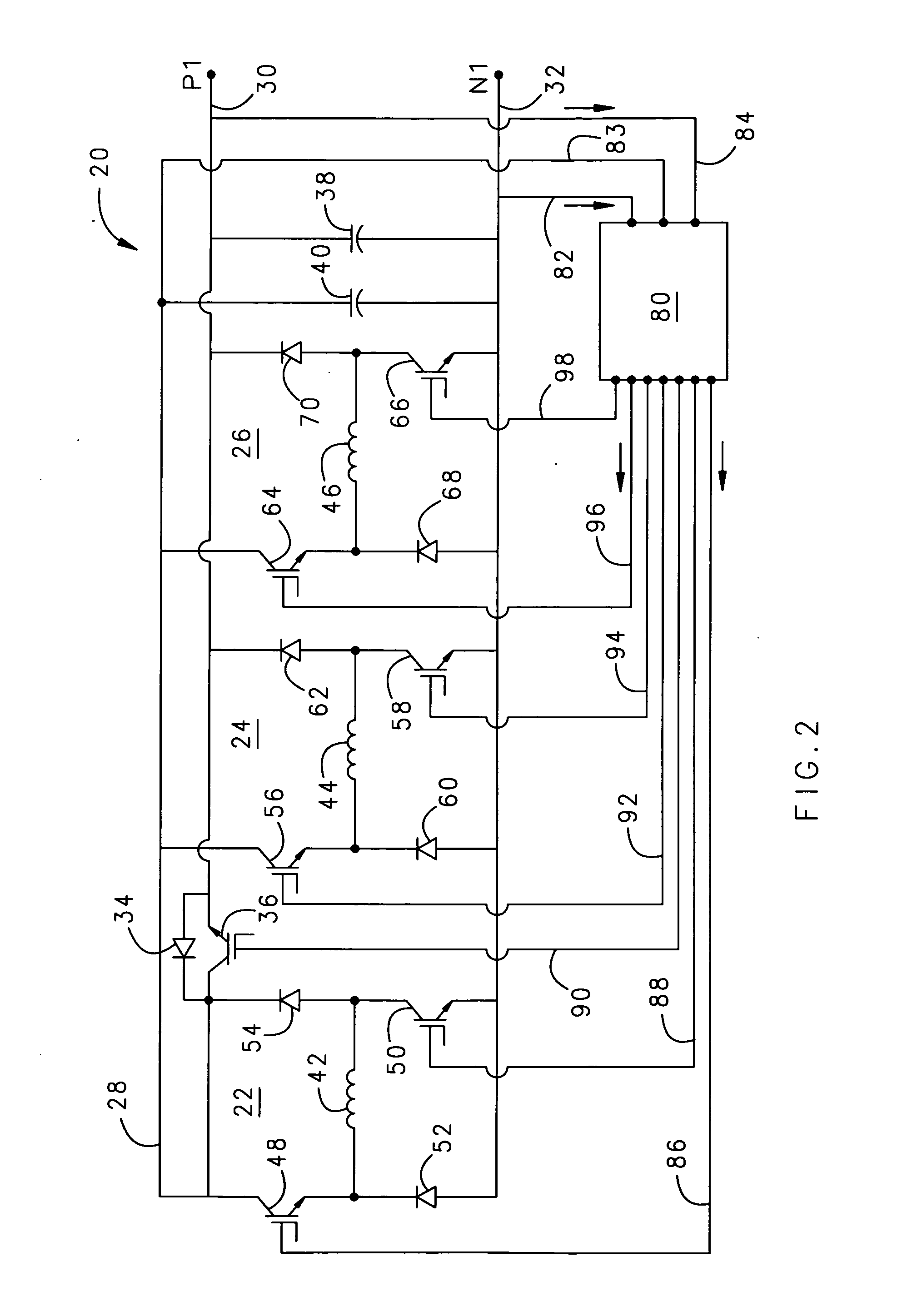Self-excitation of switched reluctance generators during load bus faults
a switched reluctance generator and load bus technology, applied in the direction of electric generator control, motor/generator/converter stopper, dynamo-electric converter control, etc., can solve the problem of load fault, generator output voltage drops to zero, load fault can occur, etc., to achieve the effect of reducing weigh
- Summary
- Abstract
- Description
- Claims
- Application Information
AI Technical Summary
Benefits of technology
Problems solved by technology
Method used
Image
Examples
Embodiment Construction
[0016]FIG. 1 schematically shows the present invention in an example environment of an aircraft 10. The aircraft 10 comprises a switched reluctance generator 12, a load 14, and a connection 16. Depending on the size and type of the aircraft, numeral 12 might represent a plurality of switched reluctance generators. Load 14 represents any device in the aircraft that requires electricity. The generator 12 is connected to the load 14 by the connection 16. The connection 16 represents both a positive and a negative bus of the generator 12. Although FIG. 1 shows an aircraft, this invention is not limited to use in an aircraft. FIG. 1 is merely presented to show one use of the present invention.
[0017]FIG. 2 shows circuit 20 for a switched reluctance generator, comprising three phases 22, 24, and 26. An alternative embodiment could include additional phases. Each phase includes an inductive winding, two switches, and two diodes. While it is possible that each phase might comprise just one s...
PUM
 Login to View More
Login to View More Abstract
Description
Claims
Application Information
 Login to View More
Login to View More - R&D
- Intellectual Property
- Life Sciences
- Materials
- Tech Scout
- Unparalleled Data Quality
- Higher Quality Content
- 60% Fewer Hallucinations
Browse by: Latest US Patents, China's latest patents, Technical Efficacy Thesaurus, Application Domain, Technology Topic, Popular Technical Reports.
© 2025 PatSnap. All rights reserved.Legal|Privacy policy|Modern Slavery Act Transparency Statement|Sitemap|About US| Contact US: help@patsnap.com



